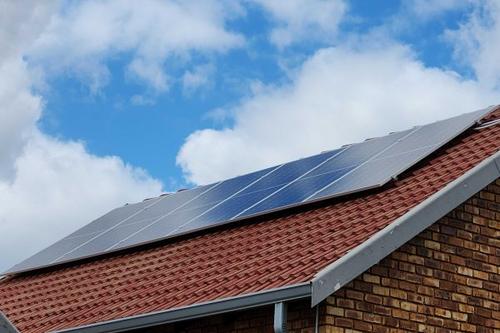
South Africa’s renewable energy sector is bracing for potential turbulence after the government proposed increasing tariffs on imported solar panels, batteries, and other green energy components. The move, led by the International Trade Administration Commission of South Africa (ITAC), aims to promote local manufacturing—but stakeholders warn it could slow down the country’s transition to clean energy.
On 17 April 2025, ITAC published General Notice 3142 of 2025, opening a four-week window for public comment on changes to 82 tariff codes tied to the renewable energy value chain. The list includes everything from solar PV panels and lithium-ion batteries to bolts, nuts, and wind turbine parts.
According to ITAC, the proposal is driven by the opportunities presented by global decarbonisation efforts and the desire to build a stronger South African supply base for renewable energy components.
“These commitments present new opportunities for the growth of a strong South African supply base of renewable energy components and finished products,” the commission said in its statement.
The potential changes include increasing tariffs to the maximum levels allowed under World Trade Organisation (WTO) rules, reviewing existing rebates—such as those on imported solar panels—and implementing new local-content requirements.
Concerns from Industry Stakeholders
The South African Photovoltaic Industry Association (SAPVIA) has voiced serious concerns. CEO Rethabile Melamu stressed the need for more time to provide a meaningful industry response, arguing that the current four-week deadline is insufficient.
“We are currently engaging our members to gather input and will submit a comprehensive written response by the provided deadline,” said Melamu.
SAPVIA warned that the proposals may not align with key government policies, including the Integrated Resource Plan and the South African Renewable Energy Masterplan. Melamu pointed out that most job creation in the solar sector happens during installation—not manufacturing—and that adding tariffs could push up project costs without creating significant employment benefits.
“An assembly plant for PV modules employs as few as 60 to 100 people, while installation and structure manufacturing can generate hundreds of jobs,” Melamu explained.
Local Manufacturing vs Domestic Demand
Currently, local manufacturing accounts for less than 15% of South Africa’s solar panel demand. SAPVIA believes that scaling up to meet even half of domestic demand would take years—and depend on consistent electricity supply and government support.
Melamu also criticised ITAC’s proposal to scrap the solar PV module rebate, warning that such a move could destabilise the market and discourage investment in solar projects.
“Removing the rebate while local capacity is still underdeveloped risks setting the industry back at a time when we need to accelerate renewable energy deployment,” he said.
A Balancing Act Ahead
ITAC says the aim is a “carefully balanced” tariff structure that supports industrialisation, export growth, and energy security. It is also considering relaxing import controls on key minerals and tightening export rules to preserve domestic resources for battery production.
While the government wants to grow a local renewable energy manufacturing base, industry leaders stress that the process must be gradual, inclusive, and based on real-world data.
SAPVIA and other organisations are preparing detailed submissions and have called for broader consultation to avoid unintended economic consequences.
“We will aim to ensure that any tariff-related decisions support both industrial development and South Africa’s renewable energy transition,” Melamu concluded.
{Source: BusinessTech}
Follow Joburg ETC on Facebook, Twitter , TikTok and Instagram
For more News in Johannesburg, visit joburgetc.com